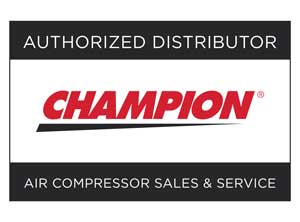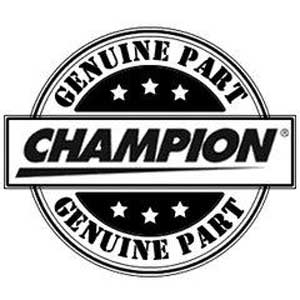Use our air compressor maintenance guide to discover how to practice preventive and corrective maintenance for an effective system.
Ask a Question:
"What are the keys to maintaining an efficient compressed air system?"
Answer:
Key #1: PREVENTIVE MAINTENANCE
"What is the key to maintaining an efficient compressed air system?" The best reply would have to be -- Preventive Maintenance.
WHAT IS PREVENTIVE MAINTENANCE?
According to "Wikipedia": Preventive maintenance (PM) has the following meanings:
"The care and servicing by personnel for the purpose of maintaining equipment and facilities in satisfactory operating condition by providing for systematic inspection, detection, and correction of incipient failures either before they occur or before they develop into major defects.
Maintenance, including tests, measurements, adjustments, and parts replacement, performed specifically to prevent faults from occurring."
*Source: from Federal Standard 1037C and from MIL-STD-188 and from the Department of Defense Dictionary of Military and Associated Terms
Preventive maintenance activities include partial or complete overhauls at specified periods, oil changes, lubrication and so on. In addition, workers can record equipment information and deterioration so they know to replace or repair worn parts before they cause system failure.
The ideal preventive maintenance program would prevent all equipment failure before it occurs.
BENEFITS OF PREVENTIVE MAINTENANCE:
-Improves system reliability and helps keep equipment working and/or extend the life of the equipment.
-Decreases system downtime and actively helps prevent unbudgeted maintenance expenses from cropping up.
-Decreases the cost of having to replace equipment as often.
-Records operational data that can help you troubleshoot an emerging problem (called "Data Trending")
Data trending is the recording of basic operation parameters including pressures, temperatures, and electrical data. For example, a slowly increasing temperature indicates a variety of maintenance requirements including cooler core cleaning, overloading of system and possible mechanical problems. Another example might include slowly decreasing pressure, indicating increased system flow requirements, reduced compressor performance or increased system leakage. Make sure someone is looking at this data on a regular basis. If the data is never reviewed then the benefit is lost.
THE VALUE OF PREVENTIVE MAINTENANCE:
To determine how valuable regular air compressor PM is to you and your business... you need to know what your "down-time" is worth. In some operations, down-time can cost hundreds, even thousands of dollars an hour.
There are many misconceptions about preventive maintenance...one being that it costs too much.
This line of thinking says regularly scheduled downtime for maintenance costs more than operating the equipment until repair is absolutely necessary...or until the equipment breaks. This may be true for some components, but don't forget to consider the long-term benefits and savings associated with preventive maintenance that have been previously mentioned.
If regular Preventive Maintenance can help reduce unexpected downtime that results in loss of production, time and materials or the ruining of an expensive plant process--then it is well worth the investment. Not to mention that unscheduled shut-downs can be extended if the correct equipment parts or repair technicians are not readily available.
"How effective is your PM program?"
The answer is: "If your PM program isn't finding problems, it isn't effective."
Key #2: CORRECTIVE MAINTENANCE
Corrective maintenance, usually called "repair", is conducted to get equipment working again
or fix any problems found during Preventive Maintenance.
The primary goal of maintenance is to avoid or reduce the consequences of failure of your compressed air equipment. PM is designed to preserve and restore equipment reliability by replacing worn components before they actually fail.
Key #3: ASSESSING YOUR EQUIPMENT: When to maintain and when to replace.
Here are several factors to consider when assessing your compressed air equipment:
-How critical is your compressed air equipment? If equipment fails, what is the impact on production or safety.
-What is the age & history of your equipment.
Equipment histories will prove that most failures occur during infancy (newly installed or recently overhauled) and old-age (self-explanatory).
How many times has this equipment failed in the past?
-How much do you trust this equipment to perform as designed when scheduled to run?
-Do you need newer technology on your equipment?
Assessing the answers to these questions will help you determine when your older equipment needs fixing or replacing. Preventive Maintenance will help your equipment last longer, run better, and save you loads of money in the long haul.
Key #4: KNOWING YOUR EQUIPMENT WHAT IT NEEDS:
-Every piece of compressed air equipment should come with a set of MAINTENANCE INSTRUCTIONS and some type of operations& parts manual. Your operators should review the equipment information and keep it handy for future reference. If you purchased used equipment and don’t have the manuals, contact your equipment distributor for a copy.
- Follow the maintenance guidelines for your equipment.
BASIC PREVENTIVE MAINTENANCE CHECK LIST FOR
RECIPROCATING (PISTON) AIR COMPRESSORS:
Before performing any maintenance function, switch main disconnect switch to "off" position to assure no power is entering unit. "Lock Out" or "Tag Out" all sources of power. Be sure all air pressure in unit is relieved. Failure to do this may result in injury or equipment damage.
DAILY MAINTENANCE
1. Check oil level of both compressor and engine if so equipped. Add quality air compressor lubricant as required.
2. Drain moisture from tank by opening tank drain valve located in bottom of tank. Do not open drain valve if tank pressure exceeds 25 PSIG.
3. Stop, Look & Listen for any unusual noise, failure to compress, overheating, vibrations or belt slippage and correct before damage of a serious nature develops.
4. Turn off compressor at the end of each day's operation. Turn off power supply.
WEEKLY MAINTENANCE
1. Clean dust and foreign matter from cylinder head, motor, fan blade, air lines, intercooler and tank.
2. Remove and clean intake air filters
WARNING
Do not exceed 15 PSIG nozzle pressure when cleaning element parts with compressed air. Do not direct compressed air against human skin. Serious injury could result. Never wash elements in fuel oil, gasoline or flammable solvent.
3. Check V-belts for tightness. The V-belts must be tight enough to transmit the necessary power to the
compressor. Adjust the V-belts as follows:
a. Remove bolts and guard to access compressor drive.
b. Loosen mounting hardware which secures motor to base. Slide motor within slots of base plate to
desired position.
c. Check the manufacturer’s specifications for correct belt tension. Apply pressure with belt tension checker to one belt at midpoint span. Make further adjustments if necessary.
d. Check the alignment of pulleys. Adjust if necessary.
e. Tighten mounting hardware to secure motor on base.
f. Re-install guard and secure with bolts.
WARNING
Never operate unit without belt guard in place. Removal will expose rotating parts which can cause injury or equipment damage.
EVERY 90 DAYS OR 500 HOURS MAINTENANCE
1. Change crankcase oil. Use type and grade oil as specified.
2. Check entire system for air leakage around fittings, connections, and gaskets, using an ultrasonic leak detector or using soap solution and brush.
3. Tighten nuts and cap-screws as required.
4. Check and clean compressor valves, replace gasket valve asssembly when worn or damaged.
CAUTION
Valves must be reinstalled in original position. Valve gaskets should be replaced each time valves are serviced.
5. Pull ring on all pressure relief valves to assure proper operation.
GENERAL MAINTENANCE NOTES:
PRESSURE RELIEF VALVE: The pressure relief valve is an automatic pop valve. Each valve is properly adjusted for the maximum pressure permitted by tank specifications and working pressure of the unit on which it is installed. If it should pop, it will be necessary to drain all the air out of the tank in order to reseat properly. Do not readjust.
TANK DRAIN VALVE: Drain valve is located at bottom of tank. Open drain valve daily to drain condensation.
Do not open drain valve if tank pressure exceeds 25 PSIG. The automatic tank drain equipped compressor requires draining manually once a week.
PRESSURE SWITCH: The pressure switch is automatic and will start compressor at low pressure and stop when the maximum pressure is reached. It is adjusted to start and stop compressor at the proper pressure for the unit on which it is installed. Do not readjust.
BELTS: Drive belts must be kept tight enough to prevent slipping. If belts slip or squeak, see V-belt maintenance in preceding section.
CAUTION
If belts are too tight, overload will be put on motor and motor bearings.
COMPRESSOR VALVES: If compressor fails to pump air or seems slow in filling up tank, disconnect unit from power source, drain air tank, and remove valves and clean thoroughly, using compressed air and a soft wire brush.
After cleaning exceptional care must be taken that all parts are replaced in exactly the same position and all joints must be tight or the compressor will not function properly.
When all valves are replaced, perform a timed pump-up test and check to see that it meets factory specifications.
Valve gaskets should be replaced each time valves are removed from pump.
Bottom Line:
One of the main keys to maintaining an
efficient compressed air system has been and still is
“Preventive Maintenance.”

